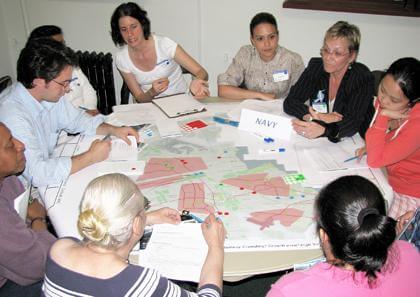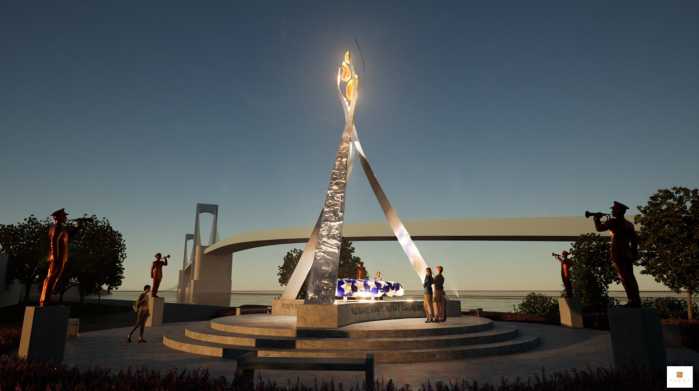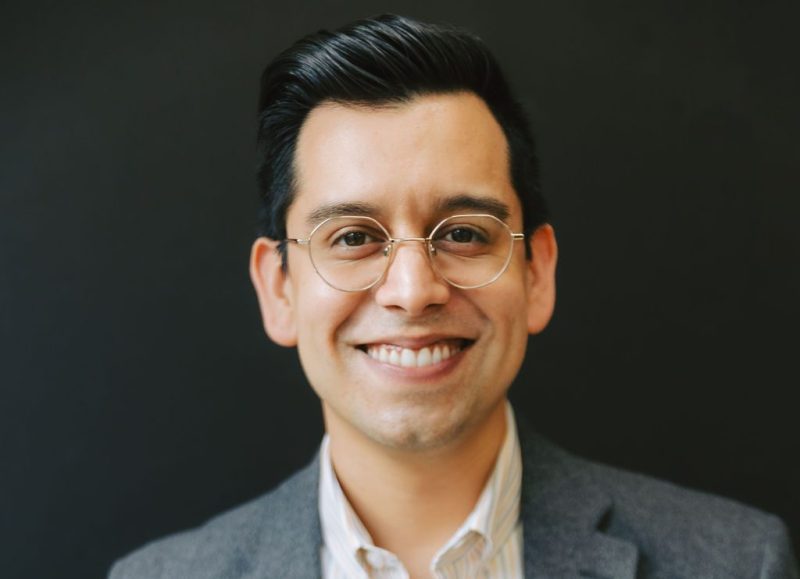By Philip Newman
New York City is desperate for a solution to its ever−slower buses and Queens straphangers and transit activists gathered last week for a close−up look at Bus Rapid Transit, a super express bus system the MTA thinks could be the answer.
It was a workshop, with Queens residents seated 10 to each in a roomful of round−shaped tables in downtown Jamaica for an explanation and discussion of what BRT is and looking at maps bearing orange−colored areas that transit authorities think might be ripe for the new service.
Representatives of the city Department of Transportation and the Metropolitan Transportation Authority encouraged the Queens residents to suggest what neighborhoods they thought the new style of buses should first serve.
Jason Chin−Fatt of Woodside, representing the transit advocacy agency Straphangers Campaign, said “we had a number of people who drive to work and they seemed encouraged about the possibility of faster buses. It seemed that they are looking for a better way than driving.”
“It was interesting to learn about this new service and hear everyone’s suggestions although, in the end, I think the transit officials will probably go ahead with their own plans,” said Eduardo Barahona of Jamaica. “But I hope it happens. Traffic in downtown Jamaica is awful.”
Barahona was among more than 60 Queens residents who attended the workshop at the Jamaica Arts and Learning Center on Jamaica Avenue June 3.
While subway ridership is the highest since the 1950s, bus patronage has leveled off because city buses are the nation’s slowest, with the worst barely faster than walking. Transit analysts blame worsening street traffic, buses stopping for traffic lights and time wasted taking on and dropping off passengers. Buses actually move only 54 percent of the time.
Bus speeds citywide declined by 11 percent between 1996 and 2006 and now average 8.1 mph, half the speed of a local subway.
The future actually arrived in the Bronx nearly a year ago with the Bx12, the city’s first BRT service, known locally as Select Bus Service. It runs between 207th Street in Manhattan and Co−op City in the Bronx along Fordham Road and Pelham Parkway.
Passengers buy tickets from a curbside vending machine, then board the bus through any door like on the subway to save boarding time. No MetroCard swiping is required, but inspectors may ask passengers for their ticket at any time. Failure to produce a ticket could bring a $100 fine.
The Bx12 also runs in its own lane from which other vehicles are banned and time is saved by not stopping for traffic lights. The bus is equipped with sensors to hold a green light until the bus has passed the intersection.
BRT service has been a reality for years throughout the world. Los Angeles has more than 20 BRT routes.
Transit officials have designated nine potential BRT corridors in Queens: LaGuardia Airportâ„East Elmhurst; Middle Village; Utopiaâ„Fresh Meadows; the Jamaica Avenueâ„Hillside Avenue corridor; southeast Queens; Jamaica to Flushing; Queens−Manhattan connections; the Long Island Expressway; and the Long Island City East River waterfront.
It was the second BRT meeting in Queens, the first having been held in Jackson Heights June 1. Other such workshops are scheduled for Brooklyn, the Bronx, Staten Island and Manhattan.
Reach contributing writer Philip Newman by e−mail at timesledgernews@cnglocal.com or phone at 718−229−0300, Ext. 136.


































